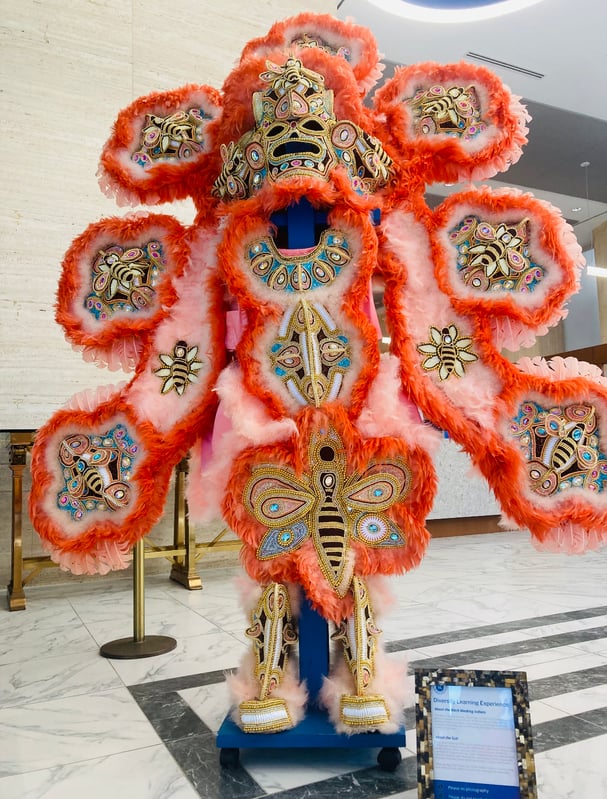Unique cultures and traditions make the region we serve special. At Hancock Whitney, we believe understanding and celebrating those differences and influences nurture an inclusive climate for associates, clients and communities.
As part of our commitment to providing diversity learning experiences, we proudly share the story of the Black Masking Indians.
Also known as Mardi Gras Indians, Black Masking Indians are people of African American descent in New Orleans who strive to preserve heritage and build community by combining the customs of African masking, Native Americans and Mardi Gras.
Celebration of Community
With traditions dating as far back as 1718, the Black Masking Indians honor a history that fuses secrecy, folklore, hardships and a cross-culture friendship forged when Louisiana’s indigenous people protected runaway slaves.
New Orleans’ Mardi Gras Indians are unique, tight-knit communities within a unique, diverse metropolitan area. They now comprise approximately 40 independent tribes—each with their own story, style and hierarchy.
The tribes typically align with one of two groups: Uptown Indians and Downtown Indians. The members’ daily livelihoods are as varied as their backgrounds.
Celebrating African, African American and Native American history and culture, nature, and ideas that are more abstract, Black Masking Indians parade only on Fat Tuesday; on Super Sunday, which started in 1969 on the third Sunday of March; and on St. Joseph Day, a March 19 Catholic observance established in New Orleans by Sicilian immigrants. They also appear at the New Orleans Jazz and Heritage Festival.
Kaleidoscope of Colors and Culture
Black Masking Indians march to music combining chants, tambourines and percussion. Their spectacular hand-sewn beaded and feathered outfits rate as some of the best folk art in America. Worn only once, each costume takes up to a year to create.

Big Chief Shaka Zulu of the Golden Feathers Hunters tribe of the Black Masking Indians wore this coral costume—crafted to honor the endangered honey bee—in 2020.
Uptown Indian costume motifs lean more toward African influences; Downtown Indian suits, more toward Native American inspirations. Price tags to produce these priceless suits can touch on thousands of dollars, depending on a member’s position in a tribe, the competitive spirit to create the best costume and the artisanship required to fashion a one-of-a-kind Mardi Gras Indian masterpiece.
Materials necessary for the three-dimensional techniques used to make the costumes, which can weigh more than 100 pounds each, include thousands of chalk beads, seed beads, sequins, stones, rhinestones and bird quills.
After each carnival, the Mardi Gras Indians retire and never reuse their suits. They start almost immediately on the next year’s works of art in preparation for the celebratory season so personified by the familiar colloquialism, “Laissez les bons temps rouler!”.
About Diversity, Equity, and Inclusion at Hancock Whitney
Diversity, equity and inclusion (DEI) are fundamental to the spirit of Hancock Whitney’s purpose. We pledge exceptional service to our clients and communities and believe we can best serve them by resembling the communities where we do business. We believe in attracting, retaining and promoting quality talent and recognize that our diversity makes us a stronger company.
Learn more about Diversity, Equity and Inclusion at Hancock Whitney.





